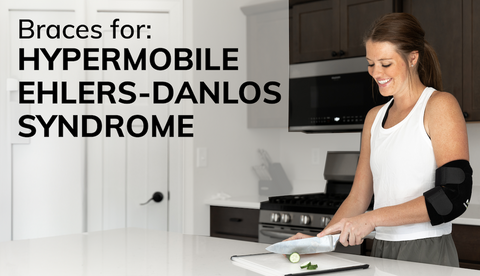Knee Pain & Obesity: The Link Between Weight Gain & Kneecap Soreness
How are Obesity and Knee Pain Connected?
The knees are the shock absorbers of the body. Their role is to absorb the force when we step, jump, run play, or perform a motion with our legs. If we are carrying around extra weight on our body it exerts extra pressure on the knee and cartilage, which can eventually lead to the cartilage breaking down or osteoarthritis. For each step the leg takes the knee supports one and a half times the body’s weight and 3-4 times our weight when climbing stairs. So, the more you weigh, the more pressure on the knee and the quicker the cartilage wears out.
Osteoarthritis can be extremely painful as the cartilage, which acts as a cushion, between the bones is depleted or in severe cases gone, which makes the bones rub together. Another possible cause of knee pain in those who are overweight and obese is a lack of proper blood flow to the knee. People who are overweight can struggle with having proper blood circulation, the lack of oxygen to the knee can also be a culprit of pain. Finally, a hormone called leptin is produced in higher amounts in those who are over a healthy weight. This hormone has been connected with the development of osteoarthritis.
How to Treat Knee Pain Caused by Obesity
-
Lose Weight
By losing weight you are lessening the amount of pressure on the knee joint which helps the cartilage to not wear down as quickly. One study found that by losing only 11 pounds patients saw a 50% decrease in the pain they experienced. Try out these 7 easy exercises for overweight people with knee pain and jumpstart your weight loss journey.
-
Follow the RICE Model
RICE treatment for injury is generally pursued with the goal of reducing the inflammation and swelling that coincides with injuries, ultimately allowing the injury to heal.
Rest: Give your knees some much needed time off, pushing them further when they are already in pain can cause further injury.
Ice: Applying ice helps to reduce pain and swelling
Compression: This is needed to help reduce swelling and the pain associated with it. Bariatric knee braces provide compression, while also allowing the knee to be supported and mobile.
Elevation: By elevating the injury it allows the body to drain the excess fluid and help reduce swelling.
-
Use a Plus Size Knee Brace
There are many different types of knee braces, each of which can have a specific purpose in supporting the knee. The BraceAbility Bariatric Plus Size Knee Brace is a great all-around extra large knee brace to help offer additional support, stability, and compression to the knee. By offering more support to the knee, braces help to slow down the wear on the cartilage, which helps prevent osteoarthritis and decrease the pain associated with it. The neoprene of this bariatric knee brace for large people helps the body retain warmth around the knee and provides compression, this helps to decrease inflammation, swelling, and pain.










